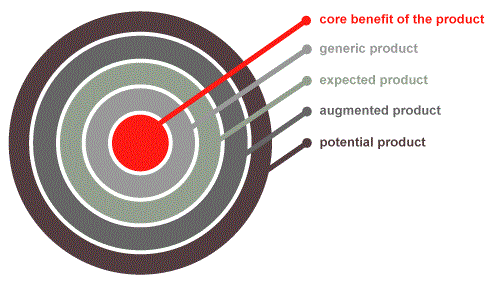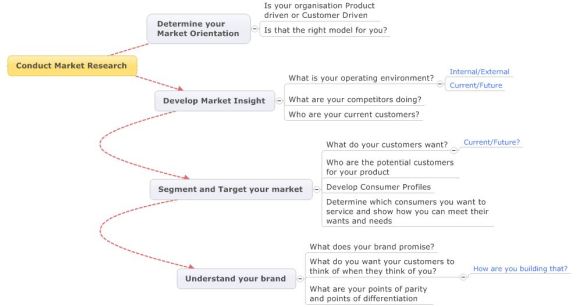So this weeks lecture was on positioning, which is the final step in the STP (Segmentation, Targeting, Positioning) process.
In my previous post I talked about segmenting the market, putting your customers into categories. Off the back of that, you make a decision about which customers you want to target (the health conscious breakfast market with a vitamin enhanced juice for example). Positioning delves deeper into that side of things ie: what strategy are you going to use to sell to the segment you’ve targeted.
Positioning relies heavily on your brand. If you are a known brand in the marketplace then consumers are already going to have a bunch of preconceptions about who you are and what you do. When you launch a new product or service, they’re going to assess that new product against what they know about your brand and attribute emotions and beliefs to your product before they’ve even seen it. Likewise, if you’re an unknown brand, you may find it a tough sell if you’re asking people to buy stuff that requires that they trust you (say a car for example, where you want reliability and the assurance that they’ll be around over the next 10 years for servicing and parts). We’ve got a whole unit on brands (which I’m told is really, really good by a lot of the senior students) so I’m not going to get into it too much now but I did want to highlight that it’s an important part of the positioning process. Sort of the background picture on your desktop… something that sets the unconscious mood.
But the thing I found really interesting in Positioning was the idea of Points of Parity and Points of Differentiation. Points of Differentiation (PoD from now on for ease of use) is the one we mostly think of when we’re thinking about products. ‘What does this product offer me that the competition doesn’t’ – like an app store that extends the functionality of your phone to an extent that no single company could match.
But from a product design point of view, that’s starting backwards. Where you need to start is the Points of Parity, namely, what do you need to offer to be considered a ‘product’ in a category. In the example below, that’s the first three circles: the core benefit, the generic and the expected. So for example with mobile phones, the core benefit is that it needs to be able to make & receive calls and be conveniently portable. Every generic product needs a screen for feedback and an address book that stores numbers. Expected benefits are things that might have once been a point of differentiation, but are now just par for the course, things such as customizable ringtones, inbuilt music player and internet access.

Figure 1: Philip Kotler - Five Levels of Marketing
Which now leads us to the two outer rings. Firstly, the augmented product which is the level at which most PoD features occur. This is where an app store like iTunes offers a point of difference to a traditional Nokia or Ericsson. With Windows Mobile and Android both pushing hard into the ap space, it won’t be long before this drops back to the ‘expected product’ ring rather than being a PoD (acknowledging that the ap stores for each system will be different and have their own benefits).
The really interesting one though is the potential product ring. This is where the next set of PoD’s come from, it’s where you leapfrog your competition. One of the things that is really cool about the ap store is it gives Apple (or android or whoever) far more development power than they would have if they were doing all the work themselves. For those of you familiar with Apple products this seceding of control is a big thing for them (they love their end-to-end hardware and software integration and control) but someone there understood that by giving up a little control, they opened up so much potential. There’s stuff put out for phones now that no one could have envisaged 4 years ago when smartphones were just starting to enter the market, augmented reality, micropayment systems, Urbanspoon and yelp.
But to round our the discussion on Points of Differentiation, whatever your killer PoD is, eventually the market will find a way to replicate or offset it. Which is why being the cheapest as your PoD is a really bad idea. Whatever you’re doing, someone can do it cheaper and if you teach customers that the most important thing is price, then the moment someone else is cheaper, you’re market is gone. Which leaves you with a couple of options: Constant innovation (which is good) or making a PoD out of something that’s not easy to copy, like service. In a world where just about anything can be bought out of China (and probably cheaper than you paid for it) finding another way to differentiate means looking at other parts of your product and the most obvious one is service, the way you deliver what you deliver. When I look at the state of Australian manufacturing, I think this model holds true:
There are the innovators – some bring an innovative product to the marketplace and stop, some have a culture of innovation that allows their organizations to exist beyond the first product
There are organizations with differentiators that still apply – ‘yeah you can get it cheaper out of china but who knows what sort of steel they’ll be using or what type of paint but we can guarantee the quality and we’ll have it there in 3 weeks because we only need to truck it down the road’
and there are the organizations with differentiators that no longer apply – ‘yeah you can get it cheaper out of china but who knows what kind of steel they’ll be using or what type of paint… Oh, you’ve got 3 months to procure it and the Chinese are offering 3rd party inspection in their factory for 40% of our price… Oh…’
And the difference between the second and the third type is all on the consumers side, not the suppliers. So I’d get cracking on a new differentiator if I was you… because in the economic climate we’ve got, companies are going to become more concerned consumers.



